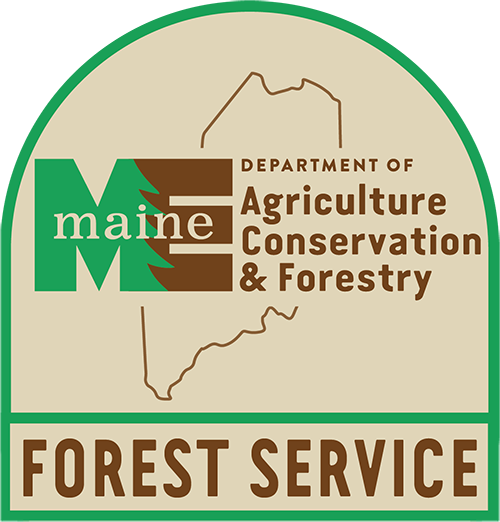Bureau/Division/Agency
Forest Services
Document Type
Text
Exact Creation Date
3-2022
Language
English
Recommended Citation
Department of Agriculture, Conservation and Forestry and Maine Forest Service, Forest Health and Monitoring Division, "Spruce Budworm in Maine 2021" (2022). Forest Service Documents. 289.
https://digitalmaine.com/for_docs/289
File Size
2.3 MB
Files over 3MB may be slow to open. For best results, right-click and select "Save As"
Rights Statement
No Copyright - United States. URI: http://rightsstatements.org/vocab/NoC-US/1.0/
The organization that has made the Item available believes that the Item is in the Public Domain under the laws of the United States, but a determination was not made as to its copyright status under the copyright laws of other countries. The Item may not be in the Public Domain under the laws of other countries. Please refer to the organization that has made the Item available for more information.



Description
Introduction
The Maine Forest Service (MFS), University of Maine Cooperative Forestry Research Unit (CFRU), and our cooperator network continue to monitor the spruce budworm situation in Maine carefully as populations still show clear signs of instability. 2021 marked the first year of the current spruce budworm population build-up that aerial surveys were able to detect larval feeding damage and the second year that appreciable feeding damage was detectable during ground surveys. Despite this, average spruce budworm moth capture across Maine has dropped for the second consecutive monitoring season. Results of the CFRU-led L2 survey are forthcoming and will help to shed additional light on Maine’s spruce budworm situation heading into 2022.
A comprehensive spruce budworm (SBW) monitoring program requires a multi-pronged approach. It relies on using methods such as pheromone trapping, light trapping, overwintering L2 larval sampling, and both ground and aerial survey. At the core of the MFS monitoring program lies the extensive pheromone trap network throughout western and northern Maine's spruce-fir forests. A permanent pheromone trap network was first established in 1992 and was made up of around 80 sites operated by MFS, J.D. Irving Ltd, Penobscot Nation Department of Natural Resources, and the USDA Forest Service. The program expanded in 2014, and now with the support of a large team of dedicated cooperators, our modern pheromone trap network consists of hundreds of sites statewide.
SBW is a native insect whose outbreaks cover vast regions and spread through massive dispersal flights as moths undergo atmospheric transport from impacted areas to new ones. In northeastern North America, SBW outbreaks tend to return on a roughly 30-60 year interval, with the last major SBW outbreak to directly affect Maine occurring during the 1970s-80s. Historical data tells us that Maine is due for another SBW outbreak and monitoring efforts have provided a glimpse of population increase, as both pheromone trap and light trap catches remain above those numbers expected during a typical endemic period. This has been accompanied by regular observations of mature larvae feeding throughout the forests of northern Aroostook County in recent years. Millions of acres of ongoing SBW defoliation in neighboring Canada has crept nearer to the Maine border over the years and Maine’s forests are now being impacted by moths migrating from those areas. Since 2013, several significant in-flights of moths into northern Maine have been suggested by pheromone and light trap captures, as well as through flight models and weather data, where moth flights have even been documented on radar. Significant atmospheric transport events were not apparent in 2020, meaning the majority of the moths recovered during that monitoring seasons likely completed their entire life cycle here in Maine’s forests. Moth migration into Maine did occur in some degree in 2021, however the extent of any influx is still difficult to determine from flight models alone.